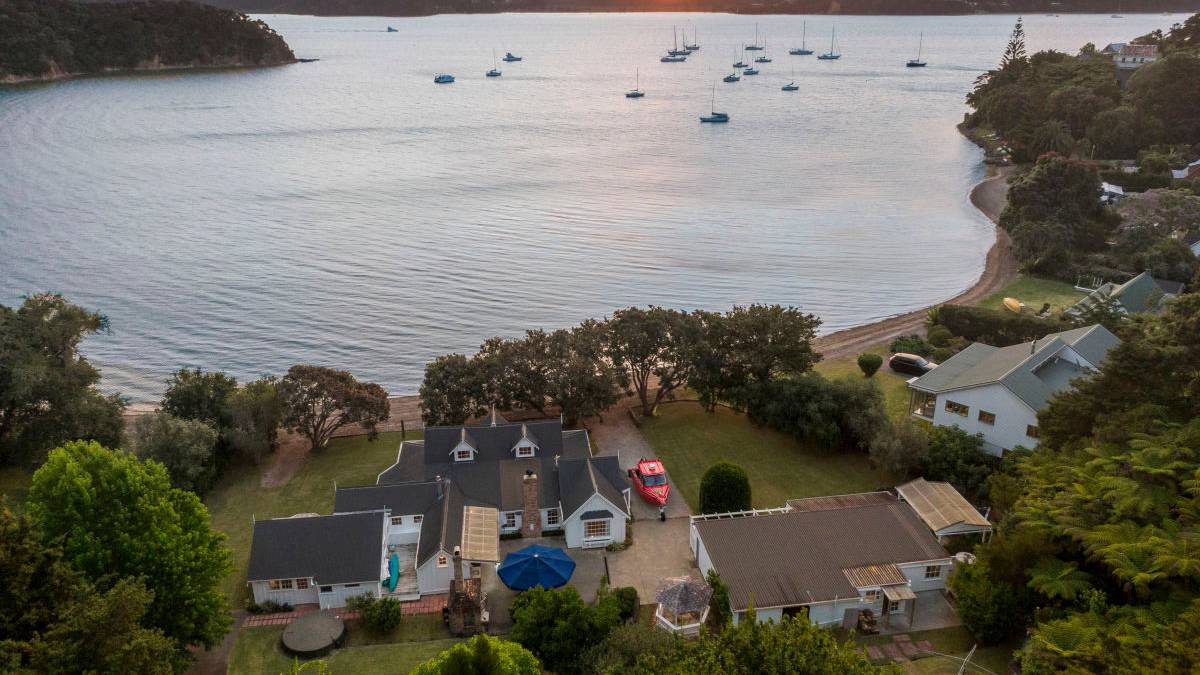Northland beaches and lifestyle offerings are helping to drive the return of buyers to the region’s property market. Photo / NZME
Northland’s property market has embraced the tag of the Winterless North by bucking a seasonal dip to become the best performing region in terms of year-on-year movement.
The revelation came off the back of a
deep dive by the Real Estate Institute of New Zealand (REINZ) into how the country’s property market has fared up to the end of July.
According to REINZ, the pace of sales and price rises of last year are continuing to cool, causing houses to stay on the market longer and median prices to slide.
However, Northland’s median house price increased 3.6 per cent to $725,000 and recorded a $15,000 jump from June to July this year.
On a national scale, the annual median property price across the country has fallen for the first time in more than a decade.
REINZ data showed the house price index, which measures the changing value of properties, fell 2.9 per cent for the year ended July compared with a 0.7 per cent increase in June.
The seasonally adjusted national median price for July fell 1.6 per cent from a year ago and is down 2.8 per cent from June, to sit at $810,000.
The last time the national annual median price decreased was in July 2011.
/cloudfront-ap-southeast-2.images.arcpublishing.com/nzme/E7WXUJW6HH6T2EB6X3SHIHWHY4.jpg)
Northland was the standout for annual value movements on the REINZ House Price Index (HPI) for New Zealand, which measures the changing value of residential property nationwide.
The region topped the index – up 10.4 per cent compared to last year. Canterbury came in second with an annual increase of 8.8 per cent after ranking first for eight consecutive months.
But all regions have decreased HPI movements over the past three months, with a national decrease of 4.9 per cent for the three months ended July 31.
REINZ chief executive Jen Baird said Northland was becoming an increasingly popular destination for people looking to settle – helped by the beautiful beaches and lifestyle offerings.
“Since Covid-19 opened the door to increased workplace flexibility, the region has seen an influx of new families moving to the area, taking advantage of the region’s growth including new housing developments and increased employment opportunities.”
She said first home buyers who had backed away from the market due to tightened lending criteria, rising interest rates, cost of living, and general uncertainty were beginning to return.
“As tweaks to the Credit Contracts and Consumer Finance Act (CCCFA) in July loosened the rules around lending, Northland began to see buyer confidence return to the market.”
Baird said the region’s buyer pool was dominated by owner occupiers and people looking to retire.
“Northland has overtaken popular retirement regions Tauranga and Mount Maunganui — which are now too expensive for some — thanks to its relative affordability and the lifestyle on offer.”
Despite buyers seeping back into the market, Northland is experiencing slow sales as properties are taking an average of 58 days to sell – 15 days more than July 2021.
Baird said while all regions saw an annual decrease in sales, Northland had the third highest decline with sales down 44 per cent from 243 last year to 136.
“Sales activity continued to slow through July — with sales across New Zealand down 36.7 per cent compared to July last year.”
The West Coast experienced the greatest drop in annual sales at 54.9 per cent followed by Auckland where sales crashed 48.7 per cent from 2767 to 1419.
“A combination of increasing interest rates, inflation, supply-chain-affected cost structures are contributing to current market dynamics, as people show caution, which slows demand,” Baird said.
“At the same time, the number of properties available for sale has increased significantly compared to 2021 — up 107.8 per cent annually.”
REINZ reported inventory levels had increased 117 per cent annually in Northland.
Baird said the increased volume of stock on the market was not down to “distressed vendors”.
“[…]New Zealand’s high employment rate and banks’ lending conservatism continue to support the ability for homeowners to handle the impact of rising interest rates.
“Rather it is because buyers have stepped back – some deterred by successive initiatives to dampen investor appetite, others hampered by changes to the Credit Contracts and Consumer Financing Act (CCCFA) and reintroduction of LVRs,” she said.




